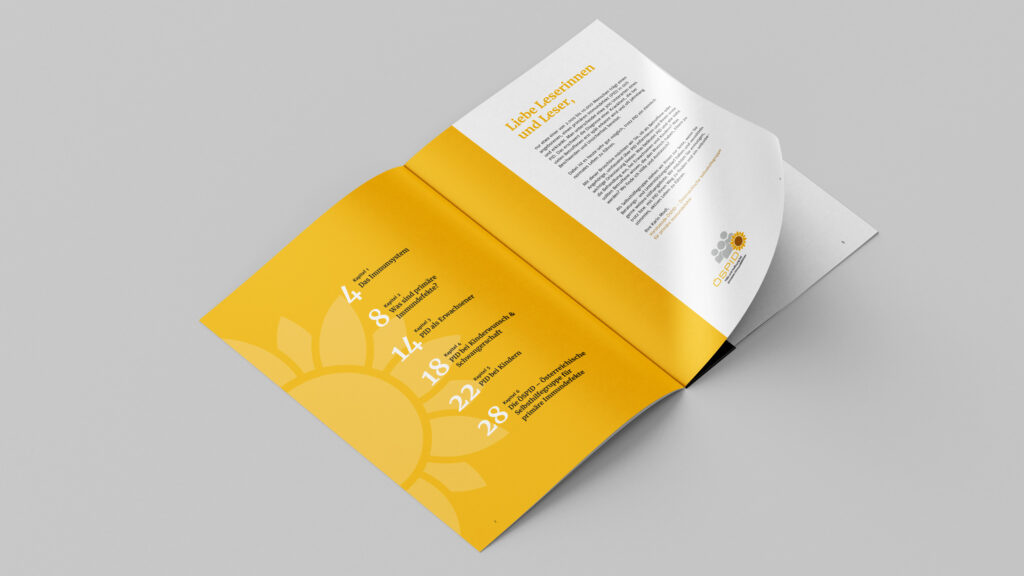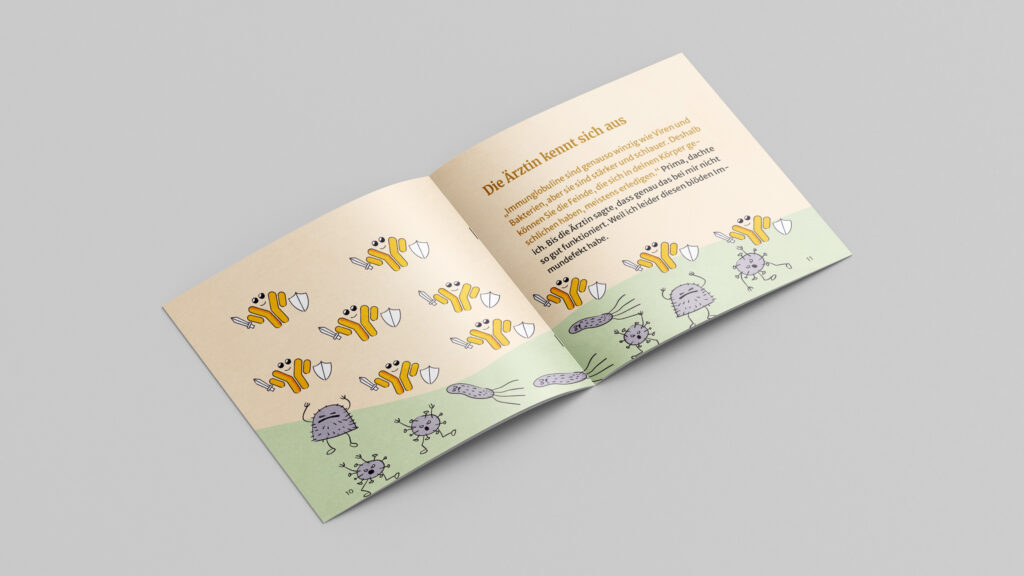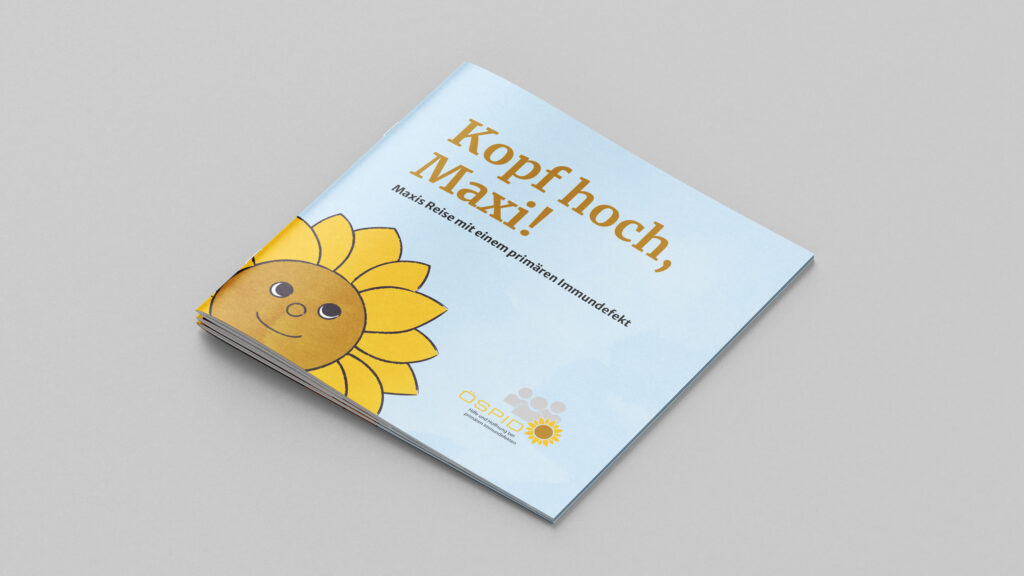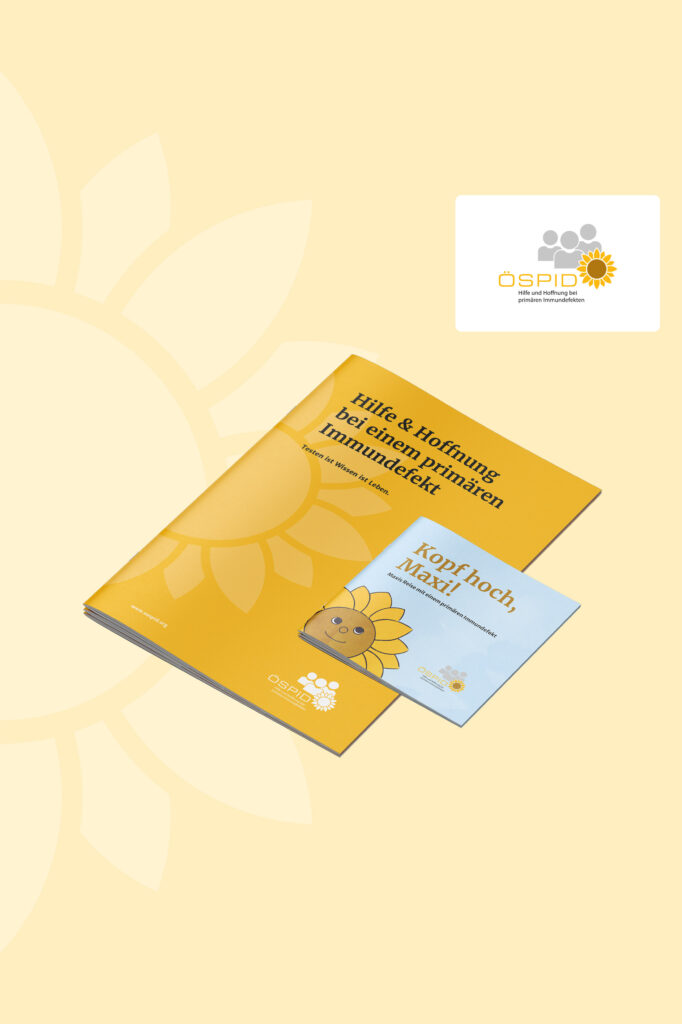Patients are given comprehensive information about PID. One focus is on children as a patient group.
Primary immunodeficiency is a disease that occurs rarely, is often discovered late, but is actually very treatable. The Austrian Primary Immunodeficiency Self-Help Group (Öspid) uses this brochure and the children’s book to raise awareness of diagnosis and treatment options.

THE TASK
People suffering from a primary immunodeficiency often don’t know it. Typically, there is a long period of suffering with frequent and prolonged phases of illness before the correct diagnosis is made. However, with the right treatment, an almost normal life is possible despite PID. A brochure should be developed for those potentially affected that provides comprehensive information about PID, allays fears and makes it clear that PID is easily treatable.

THE IMPLEMENTATION
As the target group is often in the vicinity of doctors’ surgeries and clinics, the decision was made to produce a handy printed brochure. It can be displayed in waiting rooms, quickly taken away and passed on as required. The content needed to be well-founded, comprehensive yet easy to understand and structured for different age groups. In addition, a children’s book in “Pixi” format was planned in order to address the comparatively large patient group of children and their families in a targeted and age-appropriate manner.

THE RESULT
The title “Help & hope with a primary immunodeficiency” is encouraging; the subheading “Testing is knowledge is life” is a clear invitation. The focus is on education, diagnostics and dealing with PID, and relatives are also explicitly addressed here. The first message is: A good life with PGD is possible. The second message is: We as a self-help group are here for you and support you.

The friendly color scheme with lots of yellow underlines the optimism, and the sunflower symbol of the ÖSPID appears in many places. The sunflower is also a central character in the children’s book. “Cheer up, Maxi! Maxi’s journey with a primary immunodeficiency”. The book is intended to show children that they are being helped and that they are not alone with their illness.
